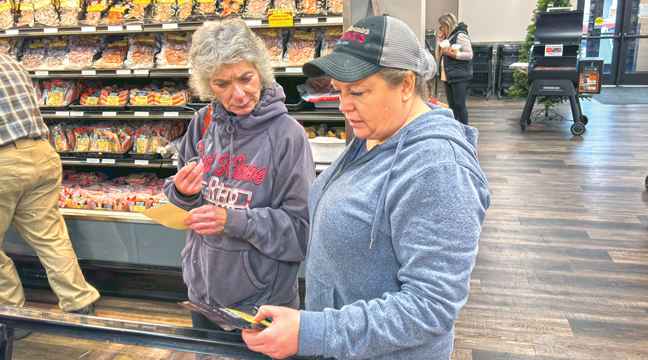The new federal farm bill passed earlier this month includes more than $8 billion in cuts over the next decade to the Supplemental Nutrition Assistance Program (SNAP).
The Congressional Budget Office projects the cuts will affect about 850,000 households, or about four percent of those receiving SNAP benefits.
But those cuts are not expected to affect SNAP recipients in Minnesota.
SNAP benefits go to a household based on their ability to purchase adequate food. The lower an eligible household’s income, the higher its benefits.
To determine that disposable income, the SNAP program allows deductions from gross income for certain essential household expenses. One of those is a shelter deduction, which is designed to insure that households facing high housing and utility costs receive sufficient SNAP benefits.
“Each state sets a standard utility allowance (SUA) reflecting typical utility costs for low income households in the state,” says Cathy Stubbs, income maintenance program supervisor with Sherburne County Health & Human Services. “In Minnesota, the SUA is $459 per month.”
If a household proves they incur out-of-pocket heating or cooling costs, they can deduct the SUA from their total income, increasing their SNAP benefits.
In some states, households that have been getting heating or cooling assistance through a separate program known as the Low Income Home Energy Assistance Program (LIHEAP), automatically qualify for the state utility deduction, even if that assistance is minimal - even as low as $1 a year.
Under the new farm bill, that assistance must be at least $20 a year in order to get the utility deduction. If not, they lose the deduction, lowering their SNAP benefits.
So only SNAP recipients in states that use LIHEAP to qualify for benefits will potentially be affected by the new farm bill.
“In essence, Minnesota didn’t adopt that,” says Stubbs. “So currently, households in Minnesota will get their shelter costs, which will be their rent or mortgage, and they will also get the assistance standard for their utilities.”
States that use LIHEAP assistance as a SNAP qualifier include California, Connecticut, Delaware, Maine, Massachusetts, Michigan, Montana, New Jersey, New York, Oregon, Pennsylvania, Rhode Island, Vermont, Washington and Wisconsin - and Washington D.C.








